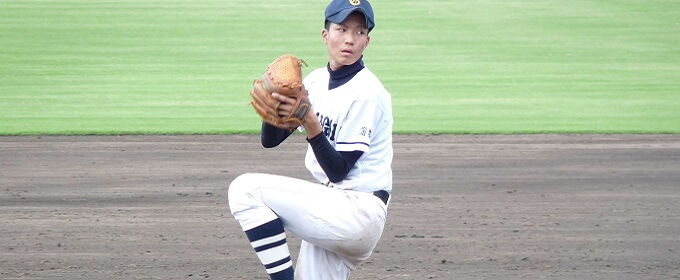- Top
- Entertainment
- Kodai Senga's early life and NPB career
Kodai Senga's early life, childhood and career in Japan
He became a professional baseball player by various coincidences.
Kodai Senga(千賀滉大 in kanji) was born on January 30, 1993 in Gamagori, Aichi Prefecture, Japan. He joined a youth baseball team and played from the second grade of elementary school, and in junior high school he joined the baseball club and played third base.
However, due to growing pains during his junior high school years, he hardly played in any games during his junior high school years. Although he was not able to practice satisfactorily, his height grew significantly over the course of his three years in junior high school. His height went from 4 feet 11 inches when he entered junior high school to 5 feet 9inches by the time he entered high school.
Kodai had no choice but to go to Gamagori High School because he was not accepted to the school of his choice for high school. He had no achievements in baseball in elementary and junior high school, so he thought he would switch to boxing or soccer after entering high school. However, he was invited to join the baseball team by a senior who was also a member of the junior high school baseball team, and he had no choice but to join the team.
Although he joined the baseball club, it was not a strong school and he was not serious about baseball at first. His preferred position was also infielder, but the coach wanted him to switch to pitcher. Mr. Kaneko, the manager, said of his intentions: "When I saw him playing catch, the rotation of the ball he was throwing was not that of a fielder's pitch. I thought it was a pitcher's pitch.
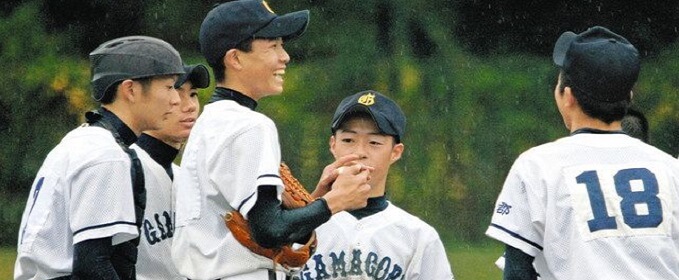
At the time, Kodai threw at a maximum speed of 74 MPH and weighed only 132 lb. That is why he never stopped working hard to overcome his problems. He said of those days, "I just knew I had to get bigger. I knew that if my body didn't change, my performance wouldn't change either. I don't remember exactly how much I ate, but I ate a lot."
What he was working on as much as eating was running. A year and a half later, he was 6 feet tall and weighed 167 lb. His ball speed had increased by about 15 MPH to a maximum of 89 MPH. However, he had knee pain and was unable to pitch in official games in the fall of his sophomore year and the spring of his junior year. In his last qualifying tournament in the summer of his junior year, he won the second game 7-5, but lost in the third game 1-7.
At the time, professional baseball scouts had low regard for Kodai. In fact, he was not even known at all. His team did not even make it to the national tournament, and Gamagori High School was not a strong baseball school.
However, he unexpectedly caught the eye of a professional baseball scout. This was thanks to the efforts of Mr. Nishikawa, the owner of a sporting goods store in Aichi Prefecture. Mr. Nishikawa had experience coaching junior high school students and was familiar with the local amateur baseball scene. One day, he heard a rumor that Kodai Senga was a great player.
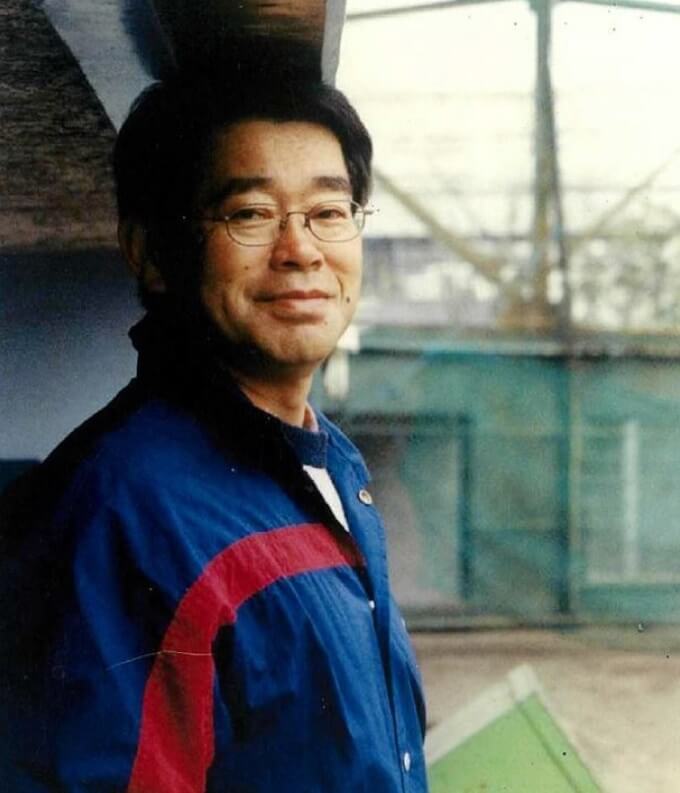
When Mr. Nishikawa went to see Kodai in person, he was smitten, saying, "There is no other player like him." He also told an acquaintance, "There is no pitcher who can use his elbows like this. Kodai Senga is going to be a player who will make millions of dollars." Mr. Nishikawa was also a pitcher when he played baseball.
Mr. Nishikawa felt that it would be a shame to let such a talented player remain buried in the ground. Although he had no direct acquaintance with Kodai, he made his best effort to let scouts know of his existence through his acquaintances. However, the scouts of the two teams who visited the stadium were very strict, and concluded that they could not sign him, even on a developmental contract. The Fukuoka Softbank Hawks were the only team that decided to sign Kodai on a developmental contract.
Kodai joined the Fukuoka SoftBank Hawks on October 28, 2010, under a developmental contract, but Nishikawa passed away on October 16 of the same year, just before the draft meeting. Mr. Nishikawa was unable to witness the moment Kodai joined a professional baseball team. However, because of Kodai's success, Mr. Nishikawa's son received many calls from his father's friends, saying, "I'm glad that the player Mr. Nishikawa left behind is playing well.
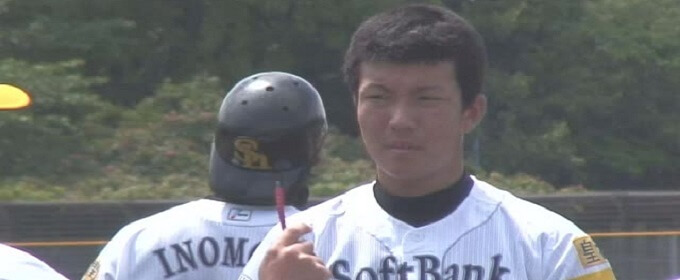
Kodai spoke about this, "I had never met Mr. Nishikawa, and I had never been to his sports store. But I am sure that without his words, I would not have been able to take the first step toward becoming a professional baseball player. When I was able to pitch in the first team, I heard about Mr. Nishikawa, and when I went to go report to him, I heard that he had actually passed away, so I was unable to report directly to him. I want to show Mr. Nishikawa, who is in the afterlife, that I am playing baseball well."
Kodai joined a professional baseball team, but when he first joined the team, he was not strong enough to keep up with the team's practice sessions. When an outfielder threw a pitch for fun that reached 87 MPH, Kodai, whose fastest pitch was 89 MPH, despaired. He could not control his pitches and could not throw strikes very well.
However, he trained hard and his velocity improved, and his control improved with the help of his coaches. In 2011, his first year with the team, he was transformed into a fastball pitcher with a maximum velocity of 94 MPH. In 2012, he started to show results from spring training, even pitching in practice games. When scouts from the local baseball team, the Chunichi Dragons, observed him pitching, they were disappointed that such a player existed in Aichi Prefecture.
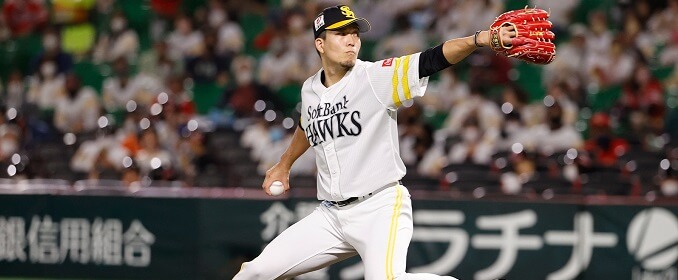
Kodai changed his number from triple digits to 41 in 2013 and started the season as a reliever. He pitched the seventh inning of a game on April 17 and became the 15th pitcher in professional baseball history to record four strikeouts per inning. After that, he continued to appear at the top of the strikeout rankings even though he was a reliever, and built up a mountain of strikeouts at an unusual pace.
In a game on May 12, he pitched two innings from the seventh inning, during which time the team won and he earned his first professional victory. He went on to pitch the first half of the season, marking 27 consecutive games without allowing a run and tying the league record for consecutive innings without allowing a run (34 and 1/3 innings). He also appeared in the All-Star Game and earned the Fighting Spirit Award with five strikeouts, including four in a row. In the end, he pitched in 51 games, posting a 1-4 record, 1 save, 17 holds, and a 2.40 ERA(earned-run average).
Kodai pitched as a reliever in 2014, but was lost for the season in June due to discomfort in his right shoulder. He switched to a starting pitcher in 2015 and pitched his first game of the season on August 18, pitching seven scoreless innings to earn his first win as a starter. He ended up pitching in only four games during the season, but he left with a 2-1 record and a 0.40 ERA, numbers that give high hopes for the following year. He started the 2016 season in the starting rotation and remained there for the entire year. He pitched his first professional complete game on April 13 and went on an eight-game unbeaten streak through July. He eventually posted a 12-3 record and a 2.61 ERA in 25 starts.
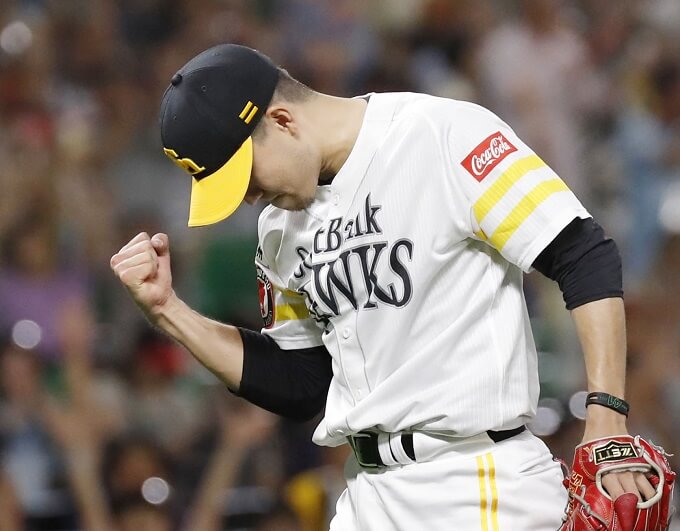
Kodai was selected for the Japanese WBC team in 2017. He pitched in the 6th inning against Australia and was the winning pitcher. However, he gave up one run in the 8th inning against the U.S. and was the losing pitcher. His final record was 4 games, 1 start, 1 win, 11 innings, 16 strikeouts, and a 0.82 ERA. He was the only member of the Japanese national team to be named to the WBC's Best Nine (Pitchers' Division). In the regular season, he posted a 13-4 record with a 2.64 ERA in 22 starts, leading the league in wins.
He was the starting pitcher in 2018, posted a 13-7 record with a 3.51 ERA in 22 starts. He was the opening day pitcher for the second straight year in 2019, throwing his fastest start of the season at 100 MPH in the opener. He started to lose his groove in July, but did manage a no-hit, no-run outing in a game on September 6. He eventually won the title of strikeout king with a record of 13-8, a 2.79 ERA, and 227 strikeouts. His strikeout-to-walk ratio of 11.33 was the highest of all time.
Kodai had a slow start in 2020 due to a right calf, right forearm, and other injuries in spring training. He did, however, eventually poseted 11-6 record with 149 strikeouts to win the pitching triple crown of best defensive rating, most wins, and strikeout king (tied with Yoshinobu Yamamoto). He missed the start of the 2021 season due to a calf condition, but upon his return he pitched consistently with a 100% QS rate. He ultimately posted 10-3 record with a 2.66 ERA in 13 starts. He was the opening day pitcher in 2022 for the first time in three years. He left the rotation in August due to COVID 19, but pitched in 22 games, posted 11-6 record with a 1.94 ERA. He then exercised his international FA rights after the 2022 season and moved to the New York Mets.
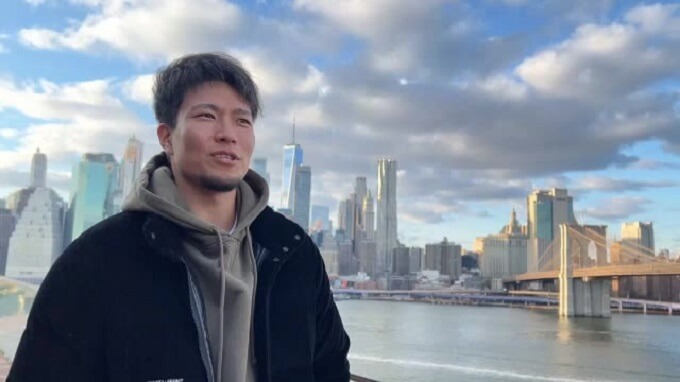
By the way, the split ball with a large drop-off that has become synonymous with Kodai is commonly known as his "ghost fork. The "ghost fork" was created through trial and error when Kodai missed a few days of practice as a youngster due to illness and forgot the form of his fork. However, the fork itself was taught to him by Kazuki Yoshimi, the ace of Chunichi in 2012. When Yoshimi retired, he said, "He kindly taught me a lot of things, even though I was from a different team and had nothing. He is the best senior player I've ever had," Kodai said on SNS, expressing his gratitude.
sources
- https://npb.jp/bis/players/01005133.html
- https://www.tokyo-sports.co.jp/articles/-/197911
- https://www.hb-nippon.com/2015/12/07/1622544/
- https://baseballking.jp/ns/column/204539
- https://www.yomiuri.co.jp/sports/npb/20221207-OYT1T50045/
- https://news.ntv.co.jp/category/sports/3800011679c04a40a31b316ee4e1ace4
- Shohei Ohtani's early life
- Shohei Ohtani's high school days
- Shohei Ohtani's NPB career
- Yoshinobu Yamamoto's early life
- Shota Imanaga's early life
- Seiya Suzuki's early life
- Kodai Senga's early life
- Yuki Matsui's early life
- Shintaro Fujinami's early life
- Roki Sasaki's early life
- Tomoyuki Sugano's early life
- Shinnosuke Ogasawara's early life
